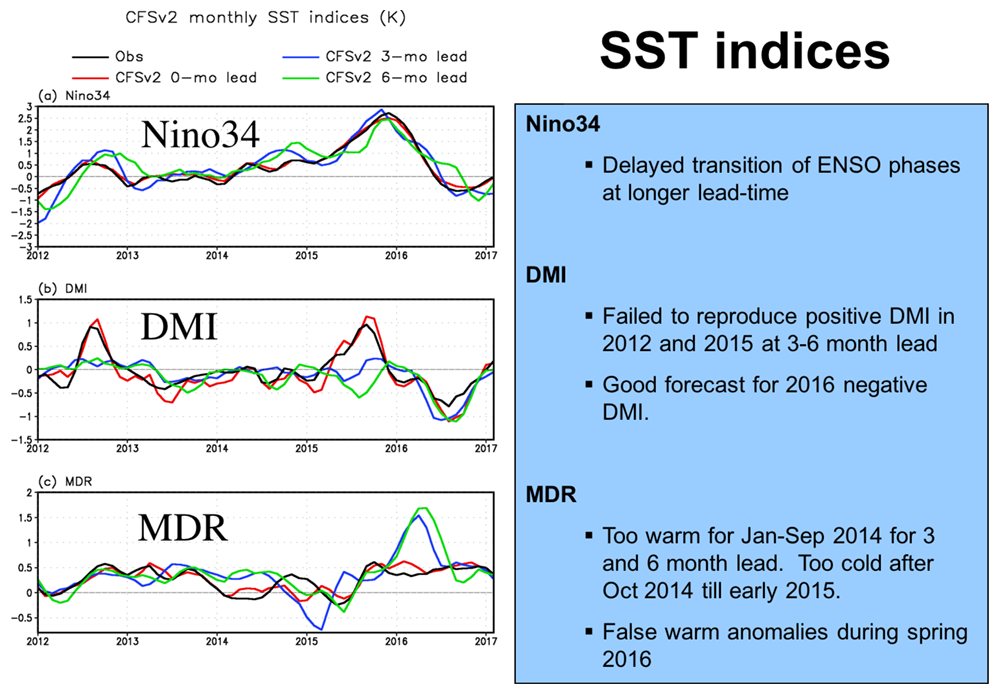Year in Review
J-SCOPE forecasts rely on output from NCEP's Coupled Forecast System (CFS) for the climate forcing, so it is worthwhile to consider the quality of the CFS predictions from early 2016 in analysis of the J-SCOPE forecasts for 2016. Here we take a regional perspective; folks interested in more quantitative results for the CFS model over an extended period and more on the basin scale, are encouraged to check out the Journal of Climate articles by Wen et al. (2012) and Hu et al. (2012). These studies indicate that the CFS has substantial skill in predicting SST in the Northeast Pacific for lead times of less than about six months, in general. The predictions from the CFS made in early 2016 indicated a decrease in El Niño conditions and a transition to La Niña conditions in the summer of 2016, and that is what was observed. The transition was delayed for the 6-month lead forecast, but averaging across the ensemble of CFS predictions, the ENSO forecast from the CFS captured the amplitude and timing of the transition fairly accurately.
The CFS predictions for sea surface temperature (SST) were too warm in early 2016, but the CFS was in good agreement with the observations by summer 2016. The CFS also accurately predicted the timing of the negative DMI in 2016, though the amplitude was slightly overpredicted. More information can be found here.









